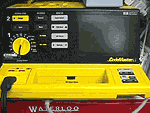Defibrillator
What is a defibrillator?
A defibrillator is a device that is designed to pass electrical current through a patient’s heart. The passing of electrical current through the heart is called defibrillation. A defibrillation is done through pads placed on the patient’s chest.
Why is defibrillation used?
A defibrillation is used to restore a patient’s heart rhythm to normal. Abnormal heart rhythms may be treated with medications while other rhythms need to be treated with defibrillation. Life threatening heart rhythms need defibrillation immediately while other heart rhythms may be defibrillated in a scheduled fashion. Defibrillation may be done using the manual defibrillator or the automatic external defibrillator (AED).
Does defibrillation hurt?
Patients needing emergent defibrillation are usually unconscious and do not feel the defibrillation. Patients with abnormal but stable heart rhythms needing defibrillation will receive sedation and pain medication before the defibrillation is done. Patients usually have no memory of the defibrillation.
Are there any potential complications associated with use of a defibrillator?
The defibrillator pads may cause a skin irritation and leave a temporary redden area where they contacted the chest. Unfortunately defibrillation does not always return the patient’s heart rhythm back to normal.
 Defibrillator
Defibrillator
 Automatic External Defibrillator (AED)
Automatic External Defibrillator (AED)